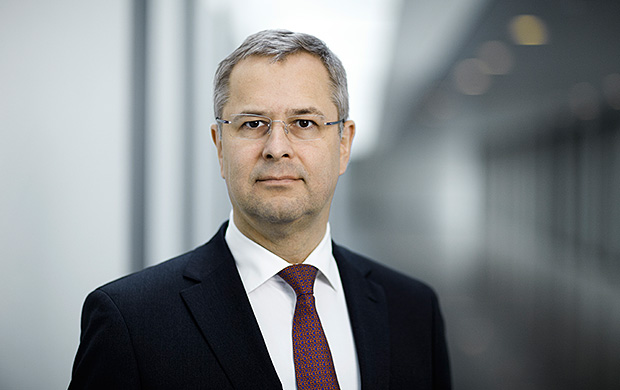The fragmented container-shipping industry has taken a step forward with the introduction of giant shipping alliances, but consolidation is needed as demand looks set to stay in the doldrums, the chief executive of the world’s biggest container-shipping operator said Friday.
“We are getting the expected benefits from vessel-sharing agreements, but more can come from consolidation,” Maersk Line CEO Soren Skou said in an interview with The Wall Street Journal. “This year, demand growth is extremely weak, around 1.5% to 2%, much less than anticipated, while capacity will grow around 7%. Coming into the year, we expected demand of 3% to 5%.”
Container vessels move 95% of the world’s manufactured goods. Last year, Maersk Line and Geneva-based Mediterranean Shipping Co., the industry’s No. 2 player, formed the 2M alliance, the latest in a series of pairings among the world’s top 20 players. The tie-up aims to save the two companies a combined $700 million annually in operating costs through sharing of vessels, networks and port calls. Maersk Line is a unit of Danish conglomerate A.P. Møller-Mærsk A/S.
Over the past three years, the top 15 operators have spent billions of dollars on giant container ships called Triple E’s that can move in excess of 18,000 containers so they can fulfill alliance commitments. The investments have added to the glut of container-shipping capacity, which analysts estimate is up to 30% above demand on some of the busiest ocean trade routes.
Freight rates have fallen to levels that barely cover fuel costs. They are currently hovering around $300 a container on the main Asia-to-Europe trade loop, well below the $1,300/container average that ship operators say they need to break even in the long term.
“Global [economic] growth is very disappointing, and if we knew what we know today, maybe some of the [investment] decisions we did three years ago we wouldn’t have done or they would have been different,” Skou said.
Maersk Line is one of a handful of operators that has managed to stay profitable in recent year, through aggressive cost cuts, but Skou said more needs to be done to secure the industry’s future.
“Maersk Line spends half a billion dollars in [information technology] every year,” he said. “It is big money. In consolidation, the cost would be shared. It is the same with operating individual headquarters and the cost of containers. If we drive cost down we will be able to live with low freight rates.”
But despite calls for consolidation, Maersk Line has said it isn’t planning to merge with or buy a competitor in the short term.
The operators are reducing the number of voyages as a way to reduce capacity and, they hope, stabilize freight rates. But Drewry Shipping Consultants Ltd. said in a recent report that the “overcapacity crisis” will grow as more ultralarge container ships enter fleets in the next few months. That would lead to several years of financial losses for container-shipping lines, the firm said.
The big players expect operators with smaller vessels to be eventually driven out of major trade routes, as they won’t be able to compete in terms of cost and frequency of port calls.
But Skou said there is a limit to how big ships can become, with the Triple E’s—roughly the height of the Empire State Building if turned upright—being the biggest that the market can accommodate.
“If you get bigger ships, you will have to sail less frequently to fill them, and that won’t meet our customers’ needs,” he said. “Unless we start to see massive [economic] growth, it is going to be at least 10 years before bigger ships are seriously considered.”
Copyright Ships & Ports Ltd. Permission to use quotations from this article is granted subject to appropriate credit given to www.shipsandports.com.ng as the source.
